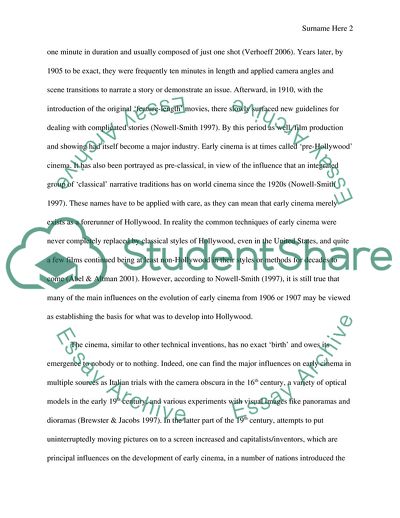Cite this document
(Early Cinemas Existence and Its Connection with Science Essay Example | Topics and Well Written Essays - 1250 words, n.d.)
Early Cinemas Existence and Its Connection with Science Essay Example | Topics and Well Written Essays - 1250 words. https://studentshare.org/visual-arts-film-studies/1759833-what-are-the-principal-influences-on-the-evolution-of-early-cinema
Early Cinemas Existence and Its Connection with Science Essay Example | Topics and Well Written Essays - 1250 words. https://studentshare.org/visual-arts-film-studies/1759833-what-are-the-principal-influences-on-the-evolution-of-early-cinema
(Early Cinemas Existence and Its Connection With Science Essay Example | Topics and Well Written Essays - 1250 Words)
Early Cinemas Existence and Its Connection With Science Essay Example | Topics and Well Written Essays - 1250 Words. https://studentshare.org/visual-arts-film-studies/1759833-what-are-the-principal-influences-on-the-evolution-of-early-cinema.
Early Cinemas Existence and Its Connection With Science Essay Example | Topics and Well Written Essays - 1250 Words. https://studentshare.org/visual-arts-film-studies/1759833-what-are-the-principal-influences-on-the-evolution-of-early-cinema.
“Early Cinemas Existence and Its Connection With Science Essay Example | Topics and Well Written Essays - 1250 Words”. https://studentshare.org/visual-arts-film-studies/1759833-what-are-the-principal-influences-on-the-evolution-of-early-cinema.


